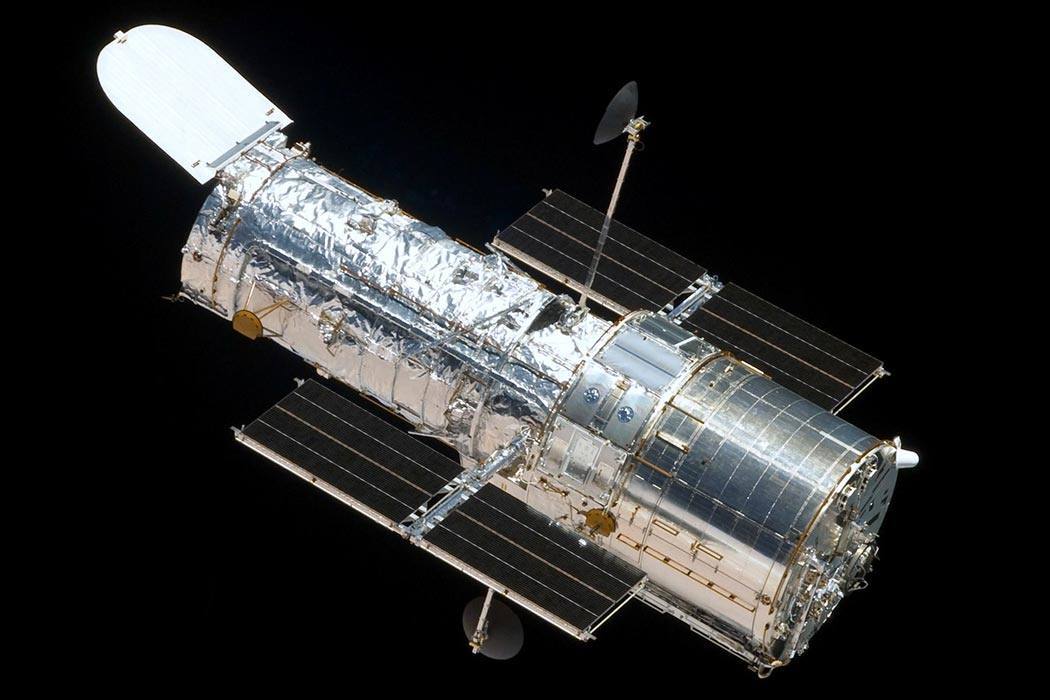This year, the Hubble telescope celebrates its 26th year in space. It has been a tumultuous period. The telescope was launched with a faulty mirror and all its long range images were blurry for three years, until a repair mission was successfully completed in 1993. Overall, the Hubble has required five manned missions to repair or upgrade its instruments. Despite the ups and downs, research conducted with the Hubble telescope has led to nearly 10,000 scientific publications and some of the most important astronomical discoveries of all time.
In 1994, the newly repaired Hubble detected rapidly spinning ionized gasses (450 km/s) near the center of galaxy M87. After a bit of math, the researchers concluded that such a rapidly spinning disk could only hold together if something with enormous gravity was concealed inside. Hubble had confirmed what until then had only been theoretical—a black hole. Until that point scientists believed that black holes existed—they were predicted by Einstein’s Theory of Relativity—but Hubble provided quality proof that they were real. The 1994 discovery showed that galaxy M87 had a supermassive black hole at its center.
Subsequent research, some conducted with the Hubble, suggests that most galaxies possess this feature. Hubble has also turned its attention to grander questions, and has been instrumental in determining the age of the universe. The universe is constantly expanding, moving outward from the universe’s point of origin, carrying celestial features (planets, star, galaxies) with it. The Hubble allowed teams to measure the distance to remote stars as that distance increased over time. The precise measurements allowed astronomers to calculate the rate at which the universe is expanding. By estimating backwards, astronomers using the Hubble pegged the universe at around 13.5 billion years old.
Then, in 2013 astronomers pointed the “deep field” instruments of the Hubble at a seemingly empty patch of the southern hemisphere sky. Under Hubble’s sensitive “deep field,” impossibly distant galaxies and clusters of galaxies came into view.
Galaxies that far away are some of the earliest that formed (they have been expanding away for longer). Since the light reaching the Hubble left those galaxies billions of years ago, they appear as they did only a few hundred million years after the big bang. The Hubble peeks not only into the distance, but into the distant past.
There are many more remarkable discoveries. Scientists have found evidence of water on distant planets, detected organic molecules in deep space, and determined when the universe will end (24 billion years from now, give or take). The U.S. no longer flies space shuttles, so barring policy changes the Hubble’s most recent upgrade is its last. Some might say that the Hubble’s best days are behind it, but with a clean bill of health, it’s really just getting started.







